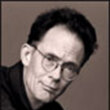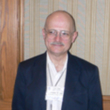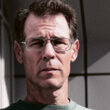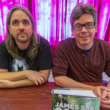Seveneves: [a novel]
Description
From the #1 New York Times bestselling author of Anathem, Reamde, and Cryptonomicon comes an exciting and thought-provoking science fiction epic—a grand story of annihilation and survival spanning five thousand years.
What would happen if the world were ending?
A catastrophic event renders the earth a ticking time bomb. In a feverish race against the inevitable, nations around the globe band together to devise an ambitious plan to ensure the survival of humanity far beyond our atmosphere, in outer space.
But the complexities and unpredictability of human nature coupled with unforeseen challenges and dangers threaten the intrepid pioneers, until only a handful of survivors remain . . .
Five thousand years later, their progeny—seven distinct races now three billion strong—embark on yet another audacious journey into the unknown . . . to an alien world utterly transformed by cataclysm and time: Earth.
A writer of dazzling genius and imaginative vision, Neal Stephenson combines science, philosophy, technology, psychology, and literature in a magnificent work of speculative fiction that offers a portrait of a future that is both extraordinary and eerily recognizable. As he did in Anathem, Cryptonomicon, the Baroque Cycle, and Reamde, Stephenson explores some of our biggest ideas and perplexing challenges in a breathtaking saga that is daring, engrossing, and altogether brilliant.
More Details
9780062190413
9780062334510
9781501220227
Similar Titles From NoveList
Similar Authors From NoveList
Published Reviews
Booklist Review
Stephenson's new novel begins with the moon exploding. But if you're looking for B-movie-style sf schlock, that is where the pulp in this painstakingly realistic epic begins and ends. Once the seven new massive chunks of lunar material that were our moon settle around their center of gravity, textbook astrophysics takes over as humanity tries to figure out what happens next. But this is astrophysics explained and performed by one of the most realistic and relatable casts of characters in eschatological narrative history. Should you find yourself reading Stephenson's epic in public, absorbed in the deeply technical and emotional unfolding of Earth's fate, prepare yourself for your own surprise as you look up to find everyone in the cafe going about their lives as if everything is just as normal as it was the day before. This brilliant piecebook will crush you like a crumbling mountain for most of the hours you spend on its nearly 1,000 pages before it launches into strangely cathartic visions of the far future for its finale. Well-paced over three parts covering 5,000 years of humanity's future, Stephenson's monster of a book is likely to dominate your 2015 sf-reading experience. High-Demand Backstory: This author is huge news these days, and his latest opus will be eagerly sought in the public library.--Francis, Chris Copyright 2015 Booklist
Publisher's Weekly Review
Stephenson's remarkable novel is deceptively complex, a disaster story and transhumanism tale that serves as the delivery mechanism for a series of technical and sociological visions. When the moon explodes, it doesn't take long for scientists (including Doc "Doob" Dubois, who bears no small resemblance to Neil DeGrasse Tyson) to realize that the debris will soon cause the destruction of Earth. The residents of the International Space Station, including roboticist Dinah MacQuarie and commander Ivy Xiao, immediately begin working with their colleagues on Earth to turn the ISS into a viable habitat for as many people as possible. The next two years are filled with heroic sacrifices, political upheavals, and disasters, most of which are only exacerbated when Earth finally succumbs to the "Hard Rain," meteorite bombardment that last for millennia. The survivors-seven fertile women-are destined to repopulate the human race, and it's only here, over halfway through the story, that Stephenson (the Baroque Cycle) really shows his hand, moving ahead 5,000 years to explore the moral and political implications of the earlier events. There's a ton to digest, but Stephenson's lucid prose makes it worth the while. Agent: Liz Darhansoff, Darhansoff and Verrill. (May) © Copyright PWxyz, LLC. All rights reserved.
Library Journal Review
The moon is struck by an unknown object and destroyed, leaving humanity two years to prepare for the inescapable meteor shower that will wipe out the surface of the earth. An international collaborative effort to launch a small fleet of arks into orbit to save a remnant of human culture is threatened by internal politics, clashing personalities, and natural disasters. Millennia later, descendants of the surviving colonists-the new human races, plural-attempt to recolonize the planet but face their own set of obstacles as they make first contact with a very different Earth. Mary Robinette Kowal and Will Damron narrate the present-day exodus and far-future return phases of the book, respectively; both readers help give a warm human tone to a story that's often grim and occasionally bogged down by discussions of orbital mechanics. -Verdict Recommended for fans of the author, those who appreciate hard science in their sf, and readers looking for a space story that doesn't need to leave Earth's orbit to be epic. ["The huge scope and enormous depth of the latest novel from Stephenson is impressive even from an author known for wallowing in the details": LJ 4/15/15 starred review of the Morrow hc.]-Jason Puckett, Georgia State Univ. Lib., -Atlanta © Copyright 2015. Library Journals LLC, a wholly owned subsidiary of Media Source, Inc. No redistribution permitted.
Kirkus Book Review
No slim fables or nerdy novellas for Stephenson (Anathem, 2008, etc.): his visions are epic, and he requires whole worldsand, in this case, solar systemsto accommodate them. His latest opens with a literal bang as the moon explodes "without warning and for no apparent reason." When the reason finally does become apparent, it's cause to enlist steely-jawed action hero Dubois Jerome Xavier Harris, Ph.D., a scientist who makes fat bread as a TV science popularizer and sucker-up to the rich and powerful. Easy street gives way to a very rocky galactic road as Doob has to figure out why the heavens are suddenly hurling mountains of space debris at Earth in a time already fraught with human-caused difficulty. Ever the optimist, Doob puts it this way: "The good news is that the Earth is one day going to have a beautiful system of rings, just like Saturn. The bad news is that it's going to be messy." The solution? Get off the planet fast, set up space colonies, perpetuate the human race using turkey basterswell, a "DNA sequence stored on a thumb drive," anywayand multiple moms, whence the title. Stephenson takes his time doing so, layering on a perhaps not entirely necessary game of intrigue involving a sly-boots "dusky blonde" of a president. When the yarn moves into deep space thousands of years from now, however, it picks up both speed and depth, for while humans are more diverse than ever ("Each of the seven new races had embodied more than one Strain"), the gap between the haves and have-nots has widened, piles of gold and golden eyes and all. Stephenson does a fine job, la H.G. Wells, of imaging a future in which troglodytes live just outside the titanium walls of civilization, and though the setup is an old one, he brings a fresh vision based on the latest science to the task. Meanwhile, all those exploding planetoids make a good argument for more STEM funding. Wise, witty, utterly well-crafted science fiction. Copyright Kirkus Reviews, used with permission.
Booklist Reviews
Stephenson's new novel begins with the moon exploding. But if you're looking for B-movie-style sf schlock, that is where the pulp in this painstakingly realistic epic begins and ends. Once the seven new massive chunks of lunar material that were our moon settle around their center of gravity, textbook astrophysics takes over as humanity tries to figure out what happens next. But this is astrophysics explained and performed by one of the most realistic and relatable casts of characters in eschatological narrative history. Should you find yourself reading Stephenson's epic in public, absorbed in the deeply technical and emotional unfolding of Earth's fate, prepare yourself for your own surprise as you look up to find everyone in the cafe going about their lives as if everything is just as normal as it was the day before. This brilliant piecebook will crush you like a crumbling mountain for most of the hours you spend on its nearly 1,000 pages before it launches into strangely cathartic visions of the far future for its finale. Well-paced over three parts covering 5,000 years of humanity's future, Stephenson's monster of a book is likely to dominate your 2015 sf-reading experience.High-Demand Backstory:This author is huge news these days, and his latest opus will be eagerly sought in the public library. Copyright 2014 Booklist Reviews.
Library Journal Reviews
For once, nations 'round the world are cooperating; postapocalypse, they must find a way to assure humanity's survival in outer space. After 5000 years out there somewhere, humans now number three billion, and they're about to launch another daring journey—back to the mysterious planet their forebears called home. Another epic from the No. 1 New York Times best-selling author of Anatham, Reamde, and Cryptonomicon.
[Page 67]. (c) Copyright 2014. Library Journals LLC, a wholly owned subsidiary of Media Source, Inc. No redistribution permitted.Library Journal Reviews
After the moon is destroyed by a mysterious force, humanity faces the terrible knowledge that life on Earth is doomed. The countdown to the planet's annihilation in a hail of debris known as the "hard rain" is spent on a huge initiative to launch as many people into space as possible, building a community of small arklets around the fragile bulk of the International Space Station. The few chosen for the program will need to find a way to survive the roughly 5,000 years it will take for Earth to cool and become habitable again. VERDICT The huge scope and enormous depth of the latest novel from Stephenson (Reamde; Snow Crash) is impressive even from an author known for wallowing in the details. Divided roughly into thirds, the narrative never fails to carry readers through the author's sometimes unfortunate habit of leaving all his research on the page, a quibble about a major work of hard sf that all fans of the genre should read—just set aside a good chunk of time. [See Prepub Alert, 11/24/14.]
[Page 65]. (c) Copyright 2014. Library Journals LLC, a wholly owned subsidiary of Media Source, Inc. No redistribution permitted.Publishers Weekly Reviews
Stephenson's remarkable novel is deceptively complex, a disaster story and transhumanism tale that serves as the delivery mechanism for a series of technical and sociological visions. When the moon explodes, it doesn't take long for scientists (including Doc "Doob" Dubois, who bears no small resemblance to Neil DeGrasse Tyson) to realize that the debris will soon cause the destruction of Earth. The residents of the International Space Station, including roboticist Dinah MacQuarie and commander Ivy Xiao, immediately begin working with their colleagues on Earth to turn the ISS into a viable habitat for as many people as possible. The next two years are filled with heroic sacrifices, political upheavals, and disasters, most of which are only exacerbated when Earth finally succumbs to the "Hard Rain," meteorite bombardment that last for millennia. The survivors—seven fertile women—are destined to repopulate the human race, and it's only here, over halfway through the story, that Stephenson (the Baroque Cycle) really shows his hand, moving ahead 5,000 years to explore the moral and political implications of the earlier events. There's a ton to digest, but Stephenson's lucid prose makes it worth the while. Agent: Liz Darhansoff, Darhansoff and Verrill. (May)
[Page ]. Copyright 2014 PWxyz LLC



































